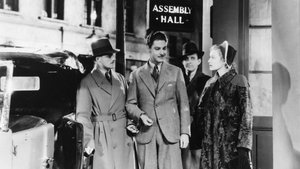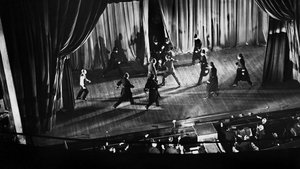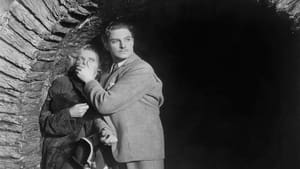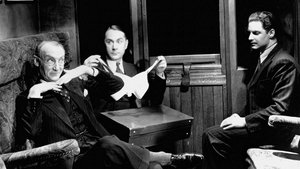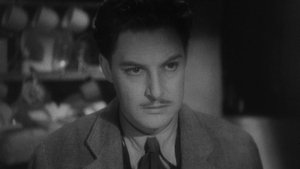Contact: [email protected]
Video Sources 0 Views
- Watch trailer
- The 39 Steps

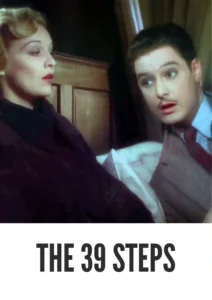
Synopsis
Table of Contents
ToggleReview: The 39 Steps (1935) – A Classic Thriller Enhanced by Early Colorization

Introduction
“The 39 Steps” (1935) stands as a timeless example of suspense and intrigue, captivating audiences with its gripping narrative and iconic characters. In this article, we’ll explore the significance of this early colored film and its enduring impact on the thriller genre.
Check The Full Colorized Movies List
Check Our Colorized Movies Trailer Channel
Understanding The 39 Steps: Director, Cast, and Genre
Directed by the legendary Alfred Hitchcock, “The 39 Steps” (1935) showcases his unparalleled skill in crafting tension-filled thrillers that keep audiences on the edge of their seats. The film features a stellar cast, including Robert Donat and Madeleine Carroll, whose magnetic performances bring Hitchcock’s vision to life with remarkable intensity. Blending elements of mystery, espionage, and romance, “The 39 Steps” (1935) transports viewers into a world of danger and deception where nothing is as it seems.
Exploring the World of The 39 Steps: Plot and Characters
At its core, “The 39 Steps” (1935) follows the harrowing journey of a man wrongly accused of murder who becomes embroiled in a deadly conspiracy involving espionage and international intrigue. As he races against time to clear his name and uncover the truth, he encounters a cast of colorful characters, including a mysterious femme fatale played by Madeleine Carroll and a cunning spy ring plotting to destabilize the country. With each twist and turn, the stakes escalate, leading to a thrilling climax that leaves audiences breathless with anticipation.
The Art of Film Colorization
Film colorization has long been a controversial topic in the world of cinema, with purists arguing that it detracts from the authenticity of the original work. However, when done tastefully and with respect for the director’s vision, colorization can enhance the viewing experience and introduce classic films to a new generation of audiences. In the case of “The 39 Steps” (1935), early colorization techniques breathe new life into Hitchcock’s masterful thriller, allowing viewers to experience the tension and drama in vibrant detail.
Early Colored Films: A Brief History
The history of colored films dates back to the early days of cinema, with filmmakers experimenting with various techniques to add color to their creations. From hand-painted frames to early Technicolor processes, the evolution of colored film has been marked by innovation and creativity. As technology has advanced, so too has the art of colorization, with modern digital techniques offering filmmakers unprecedented control over the color palette of their films.
The 39 Steps and Its Early Colored Version
The decision to release “The 39 Steps” (1935) in a colorized format was met with both excitement and skepticism. While some welcomed the opportunity to experience Hitchcock’s classic thriller in vibrant color, others expressed concerns about the potential impact on its visual aesthetic. Nevertheless, the early colored version of “The 39 Steps” (1935) offers viewers a fresh perspective on the iconic film, enhancing its visual appeal and immersing audiences in its atmospheric world of suspense and intrigue.
The Debate Over Film Colorization
The debate over film colorization continues to divide audiences and critics alike, with proponents arguing that it breathes new life into classic movies and introduces them to a new generation of viewers. Detractors, on the other hand, maintain that it compromises the artistic integrity of the original work and diminishes its historical significance. As filmmakers and audiences grapple with the implications of colorization, the debate rages on, with no easy answers in sight.
Examining The 39 Steps as an Early Colored Film
As with any colorized classic, the impact of colorization on “The 39 Steps” (1935) is a matter of personal interpretation. Some may argue that it enhances the film’s visual appeal and immerses viewers in its world, while others may feel that it detracts from the stark beauty of the original black and white version. Regardless of one’s stance on the issue, there’s no denying the enduring power of “The 39 Steps” (1935) as a timeless thriller that continues to captivate audiences with its suspenseful plot and unforgettable characters.
Influence and Legacy: The 39 Steps’ Impact on Cinema
“The 39 Steps” (1935) has left an indelible mark on the world of cinema, inspiring countless filmmakers and shaping the trajectory of the thriller genre. From its innovative storytelling techniques to its iconic set pieces, the film continues to influence filmmakers around the globe, reaffirming its status as a timeless classic that stands the test of time.
Director’s Cinematic Legacy: Beyond The 39 Steps
Alfred Hitchcock’s influence extends far beyond “The 39 Steps” (1935), with a body of work that continues to captivate audiences and inspire filmmakers to this day. From “Psycho” to “Vertigo,” Hitchcock’s films are celebrated for their psychological depth, technical innovation, and masterful storytelling. Through his groundbreaking work, Hitchcock has left an indelible imprint on the world of cinema, shaping the course of film history and solidifying his legacy as one of the greatest directors of all time.
Themes Explored in The 39 Steps
“The 39 Steps” (1935) explores a myriad of themes, from the nature of identity and deception to the relentless pursuit of truth and justice. Through its complex characters and suspenseful plot, the film invites viewers to ponder the intricacies of human nature and the moral dilemmas that confront us in our daily lives. As audiences immerse themselves in the world of “The 39 Steps” (1935), they are reminded of the timeless truths that bind us together and the universal quest for meaning and purpose in an uncertain world.
Reception and Controversy Surrounding The 39 Steps
Upon its release, “The 39 Steps” (1935) received widespread critical acclaim, with many praising its suspenseful plot, innovative storytelling, and Hitchcock’s masterful direction. However, the decision to release the film in a colorized format sparked debate among purists, reigniting the age-old discussion surrounding film preservation and artistic integrity. Despite the controversy, “The 39 Steps” (1935) remains a beloved classic that continues to captivate audiences with its timeless tale of suspense and intrigue.
Where to Watch The 39 Steps Online
For those eager to experience the timeless magic of “The 39 Steps” (1935), the film is readily available on popular streaming platforms such as Netflix, Amazon Prime, and Hulu. Whether you choose to watch it in its original black and white format or the early colored version, “The 39 Steps” (1935) promises to transport you to a world of suspense and excitement, where danger lurks around every corner and nothing is as it seems.
FAQs About The 39 Steps
Q: Is “The 39 Steps” (1935) based on a true story? A: No, “The 39 Steps” (1935) is a fictional tale crafted by Alfred Hitchcock, who drew inspiration from the espionage thrillers of the time and added his own unique twists and turns to create a gripping narrative.
Q: Who are the main actors in “The 39 Steps” (1935)? A: “The 39 Steps” (1935) features Robert Donat and Madeleine Carroll in the lead roles, with memorable performances that elevate the film to classic status.
Q: What awards did “The 39 Steps” (1935) win? A: While “The 39 Steps” (1935) did not win any major awards, it received widespread critical acclaim for its innovative storytelling and Hitchcock’s masterful direction.
Q: Why was “The 39 Steps” (1935) released in a colorized format? A: The decision to release “The 39 Steps” (1935) in color was made to introduce the film to a new generation of viewers and enhance its visual appeal for modern audiences. While the choice to colorize the film sparked debate among purists, it ultimately allowed “The 39 Steps” (1935) to reach a wider audience and ensure its continued relevance in the annals of cinematic history.
Conclusion
“The 39 Steps” (1935) remains a timeless masterpiece of suspense and intrigue, captivating audiences with its thrilling plot, memorable characters, and Hitchcock’s masterful direction. Whether viewed in its original black and white format or the early colored version, the film continues to enthrall audiences of all ages, reaffirming its status as a classic of the thriller genre and a testament to the enduring power of cinema to transport us to new and exciting worlds.
